The Stealthy Invader
How to Prevent Mycoplasma Contamination in Cell Culture?
Jul 23, 2024 | Informative Articles

How Can I Protect my Cells from a Mycoplasma Contamination?
Contamination with mycoplasma is a recurring problem in cell culture laboratories and the biopharmaceutical industry. Preventing mycoplasma contamination is essential for ensuring the integrity of cell culture experiments and the safety of biopharmaceutical products.
This article provides key strategies and best practices to tackle mycoplasma contamination before they enter your cell culture.
Cell Culture Facility
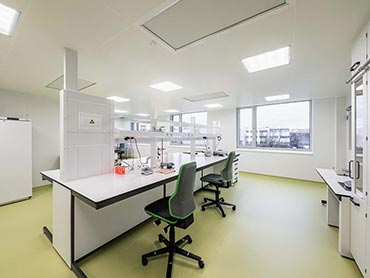 Photo: © Steffen Spitzner
Photo: © Steffen Spitzner
Laboratory design, ventilation systems and airflow patterns should be considered as these factors can influence the dispersion and deposition of aerosols, airborne particles and microorganisms. The facility should be designed and equipped for aseptic cell culture procedures in general.
It is essential that any sterile cell culture work is carried out under a laminar-flow hood, that is certified and regularly checked for its proper function. Operating the laminar-flow hood for at least 15 minutes before and after work can also help to reduce the contamination risk. All work surfaces as well as all devices entering the hood should be disinfected prior to and after processing cell cultures.
It is not only important to disinfect but also to clean work surfaces thoroughly and at regular intervals. Regular cleaning is also essential for incubators and water baths since they offer ideal environmental conditions for microbial growth. Furthermore, these devices often are shared among multiple users and cell culture experiments, increasing the risk of cross-contamination.
Following effective housekeeping procedures (cleaning floors, cupboards, work surfaces and sinks) on a regular basis can help to minimize contamination of the environment.
Furthermore, unauthorized persons should not be allowed to enter the laboratory and overcrowded laboratories should be avoided since they may have higher concentrations of airborne contaminants, increasing the risk of a mycoplasma contamination.
Last but not least, cell culture waste should be sterilised prior to disposal.
Cell Culture Procedure
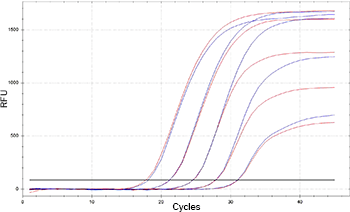
Exemplary qPCR amplification plot
A good cell culture practice and regular testing of all cell cultures can decrease the risk of mycoplasma contamination.
For this reason, it is crucial to establish an effective, sensitive and reliable mycoplasma detection method, preferably PCR analysis.
All cell cultures should be tested on a regular basis, at least monthly. Newly acquired or suspect cell lines should be kept in quarantine until they are confirmed to be mycoplasma-free.
Antibiotics should be used responsibly, only in special applications and for short durations since it may lead to susceptibility and resistance. A delayed detection of low-level contamination could also be a consequence of antibiotics use. Instead of antibiotics use, a good aseptic practice plays a much more important role in the prevention of contamination.
Only certified cell culture reagents, media and sera from reputable suppliers should be used. However, it is still the responsibility of the end user to verify that the products have been tested and certified as mycoplasma-free.
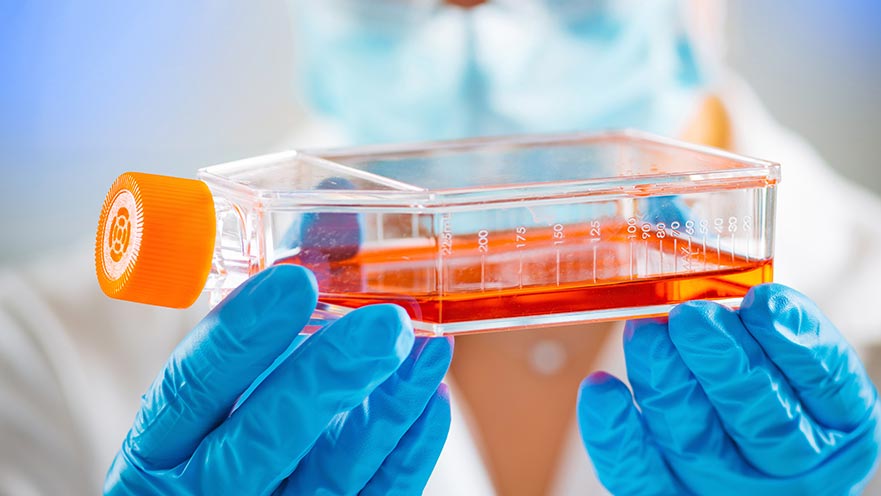 Photo: Microgen | Depositphotos.com
Photo: Microgen | Depositphotos.com
It is recommended to process only one cell line at a time and to use different medium/serum aliquots for different cell lines to avoid cross-contamination.
Cell characteristics of the cell culture should be checked regularly. If a mycoplasma-positive cell culture has been identified, it should be discarded or separated from other cultures and treated with mycoplasmacidal reagents as quickly as possible. It is recommended to report all cell contamination incidents to gain an overview which might help to solve the problem.
Operator Techniques
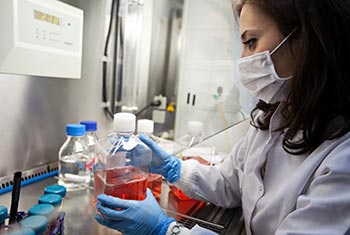 Photo: iStock.com | gevendes
Photo: iStock.com | gevendes
Since laboratory personnel is known to be the major source of mycoplasma contamination it is fundamental for the cell culturist to strictly follow general aseptic techniques. This includes thorough and frequent washing and disinfection of hands - not only prior to but also following cell culture work, as well as wearing protective and clean lab coats, taking off jewellery and tie back hair.
It is important to avoid talking, sneezing, coughing and unnecessary traffic during cell culture processing at the laminar-flow hood and in the immediate work area, as the generated aerosols may carry various mycoplasma species that contaminate cells directly or any lab reagents and equipment. Furthermore, liquids in bottles and flasks such as medium and serum should be pipetted and not be poured to avoid the generation of aerosols.
Prohibition of eating, drinking and smoking as well as pipetting with the mouth should be a matter of course these days. Educating laboratory personnel about the risks of mycoplasma contamination and proper cell culture practices is essential to minimize the contamination risk.
Summarized Best Practice to Prevent Mycoplasma Contamination in Cell Cultures
Cell Culture Facility
Cell Culture Procedure
Operator Techniques/Cell Culturist
Disinfect work surfaces before and after work
Disinfect any devices entering the laminar-flow hood
Use certified laminar-flow hoods
Have the laminar-flow hood function regularly checked
Clean work surfaces thoroughly and regularly
Clean incubators and water baths regularly
Keep laboratory clean (floor, sinks, cupboards)
Sterilise cell culture waste before disposal
Don’t allow unauthorized persons to enter the lab
Establish reliable mycoplasma detection methods
Test your medium components before use
Use antibiotic-free media whenever possible
Use certified cell culture reagents and media
Keep incoming cell cultures in quarantine until verified as mycoplasma-free
Follow good laboratory practice
Perform mycoplasma testing regularly (at least monthly)
Discard infected cultures or segregate and treat them with mycoplasmacidal elimination reagents
Only handle one cell line at a time and aliquot medium for different cell lines
Follow general aseptic techniques and educate lab personnel about it
Wash and disinfect your hands before and after work
Avoid mouth pipetting
Don't talk during cell culture work
Don't eat, drink and smoke in the lab
Take off jewellery and tie back your hair
Avoid traffic at the clean bench
Wear clean lab coats and gloves
Don't pour, but pipette media from bottles
The proposed strategies and practices will not automatically prevent any mycoplasma infection but will significantly decrease the probability of its occurrence.
Discover our solutions for preventing cell culture contamination
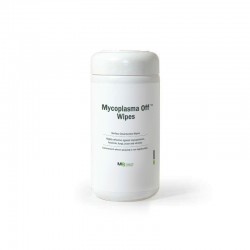

Ready-to-use and rapidly effective against mycoplasma contamination
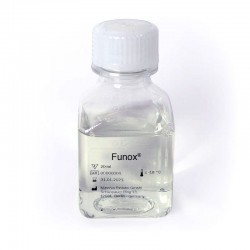
Protects cell culture from a broad range of common fungi and yeast contaminants
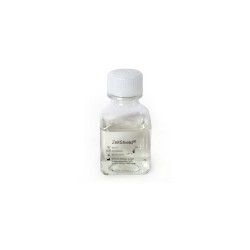
Active against most intracellular and extracellular growing bacteria, mycoplasma, protozoa, fungi and yeast
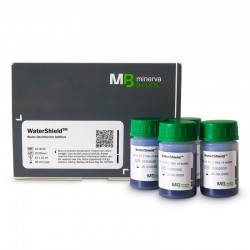
Prevents microbial growth in water baths and incubators
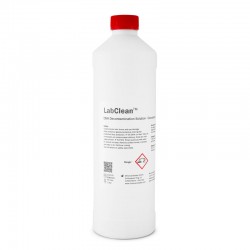
Eliminates DNA from large areas like floors and tiles

